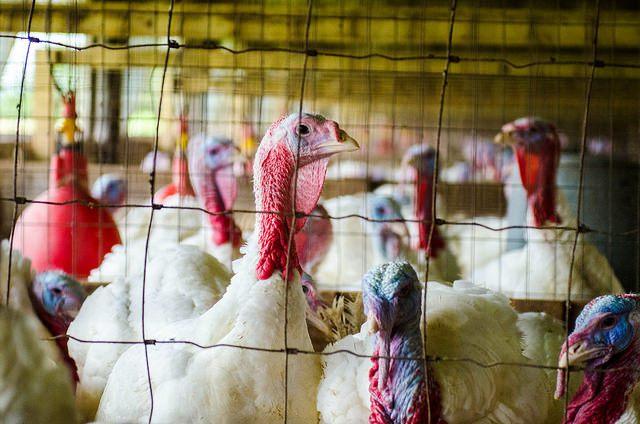A highly pathogenic avian influenza H5N2 virus has struck a turkey farm in west-central Minnesota, marking its first appearance in the Mississippi Flyway after surfacing in the Pacific Northwest in recent months, the US Department of Agriculture (USDA) announced late yesterday.
"It is the same strain of avian influenza that has been confirmed in backyard and wild birds in Washington, Oregon, and Idaho as part of the ongoing incident in the Pacific flyway," the USDA said in a statement.
The virus hit a turkey breeder replacement flock in Minnesota's Pope County, the USDA said. State Veterinarian Bill Hartmann, DVM, MS, said nearly all of the 15,000 turkeys in one barn on the farm died, the Associated Press (AP) reported last night.
State officials quarantined the farm and planned to destroy the remaining turkeys there, according to the USDA and the Minnesota Board of Animal Health (MBAH). The risk to humans is considered low, since no human H5N2 cases have ever been reported, officials said.
After workers noticed increased turkey deaths, samples were tested by the University of Minnesota Veterinary Diagnostic Laboratory, the USDA said. The finding was then confirmed by the National Veterinary Services Laboratories in Ames, Iowa, part of USDA's Animal and Plant Health Inspection Service (APHIS). The AP said the unusual turkey deaths were first noticed on Feb 26.
Disease-control zone
The MBAH said a 6-mile-diameter disease-control zone has been established around the affected farm, where movement of poultry will be restricted. Bethany Hahn, communication director for the board, said today that no other outbreaks have been found in the area. There are no other commercial poultry farms in the zone, but officials are checking backyard flocks, she told CIDRAP News.
Hahn also said the MBAH, at the request of the USDA, plans to expand the control zone to about 12 miles (20 kilometers).
The AP reported that the farm has four turkey barns. Hahn said the farm housed a total of 44,000 turkeys, including the 15,000 in the affected barn. She said the poultry producer is working with the USDA and the MBAH on a plan for culling the remaining turkeys, disposing of the carcasses, and cleaning and disinfecting the facilities.
Hartmann said the virus might have been tracked into the barns from fecal material left by infected wild birds, according to the AP. It's also possible for infected waterfowl to spread the virus to shore birds that might then get into a turkey barn, he said.
Minnesota Health Commissioner Ed Ehlinger, MD, MSPH, said the only humans at risk were four people who worked with the infected flock, the AP reported. Hahn said the Minnesota Department of Health was monitoring them.
Industry concern
With Minnesota being the nation's top turkey-producing state, the outbreak is a big worry for turkey farmers. Avian flu outbreaks usually cause international trading partners to ban imports from affected regions. Minnesota produces about 46 million turkeys a year, and about 8% of them were exported in 2013, according to the AP story.
Steve Olson, executive director of the Minnesota Turkey Growers Association, told the Minneapolis Star Tribune that biosecurity measures on farms are being stepped up, with entry into barns more carefully controlled.
"If we can get through the next 21 days without finding anything, we should be in good shape," said Minnesota Agriculture Commissioner Dave Frederickson as quoted by the AP.
The USDA described the H5N2 virus as a product of mixing (reassortment) between an Asian-origin H5N8 virus and North American low-pathogenicity avian flu viruses. The H5N8 virus spread rapidly along migratory bird pathways last year, including the Pacific Flyway.
"These mixed-origin viruses contain the Asian-origin H5 part of the virus, which is highly pathogenic to poultry. The N [neuraminidase] parts of these viruses came from North American low pathogenic avian influenza viruses," the agency said.
Chicken farms in southern British Columbia's Fraser Valley were hit by a number of H5N2 outbreaks late last year. In mid-December the virus surfaced in a wild pintail duck in a nearby area of Washington state, and subsequently it turned up in more wild birds and some backyard flocks in Washington, Oregon, and Idaho.
See also:
Mar 5 USDA announcement
Mar 5 MBAH statement
Mar 5 AP story
Mar 6 Star Tribune story






















